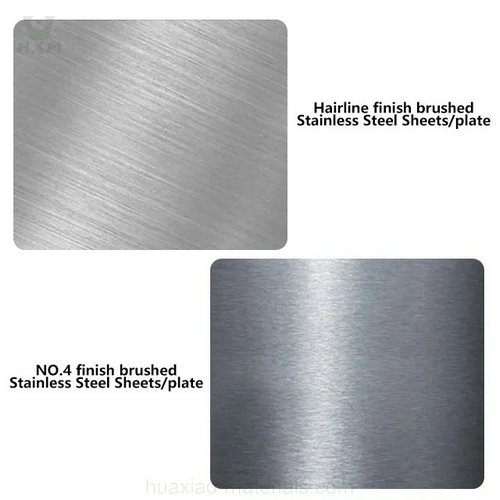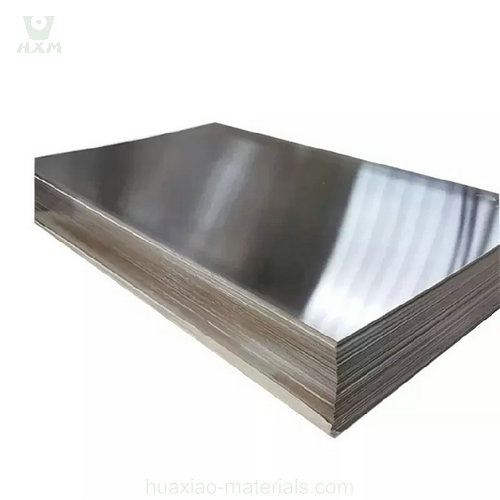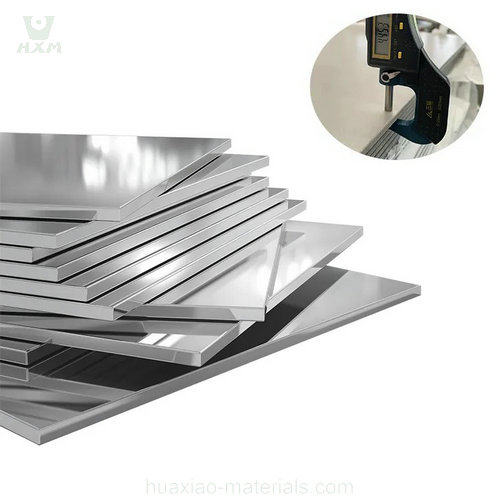
Brief introduction
Stainless steel sheet is a type of stainless steel material with characteristics such as corrosion resistance, high temperature resistance, and high strength. It is widely used in industries such as construction, kitchenware, medical equipment, chemical industry, and food processing. According to different uses and processing requirements, stainless steel sheet can be divided into different types, such as cold-rolled sheet, hot-rolled sheet, and medium-thick sheet. At the same time, stainless steel sheet also has a variety of steel grades and specifications to choose from to meet the needs of different customers.Choose the right stainless steel sheets to make your projects more successful!
Standard Grade:
ASTM:A240, SA24.
S30100, S30400, S30403, S31008, S31603, S32100, S41008, S43000, S43932, S44400, S44500.
JIS: G4304, G4305, G4312.
SUS301, SUS304, SUS304L, SUS310, SUS316L, SUS321, SUH409L, SUS410S, SUS420J2, SUS430.
EN: 10088-2, 17224, 17440, 17441.
1.4310, 1.4301, 1.4306, 1.4845, 1.4404, 1.4541, 1.4512, 1 .4000, 1.4028, 1.4016, 1.4509.
AISI: 301, 304, 304L, 310S, 316L, 321, 409L, 410S, 430, 439, 441, 444, 445.
Mill’s Standard: 201, 202, 204Cu3, L1 L4.
Processing mode:Hot Rolled, Cold Rolled.
Hot Rolled Available Size:
Finish: NO. 1, Black.
Thickness(mm):3~100.
Width(mm):914, 1000, 1219, 1250, 1500, 1524, 1800, 2000, 2500, 2800, 3000.
Length(mm):2000, 2438, 2500, 3000, 3048, 6069, 10000, 12000.
Cold Rolled Available Size:
Finish: No. 1, 2B, BA, No.3, No.4, No.5, No.8, HL, Etching, SB,Back Pass, Ti-coating.
Thickness(mm):0.3~3.0.
Width(mm): 914, 1000, 1219, 1250, 1500, 1524, 1800, 2000.
Length(mm):2000, 2438, 2500, 3000, 3048, 6069, 10000.
Protect Film:PVC, PE, LASER-PVC, Black-White, Blue-White, 20um-120um.
In the field of modern industry and construction, stainless steel sheets are widely used in various application scenarios. However, many people may feel confused when faced with various materials, specifications and characteristics when choosing a stainless steel sheet that suits their needs. This article will provide you with a comprehensive guide on how to choose the right stainless steel sheet and stainless steel plate suppliers.
Step 1: Understand the marking of stainless steel materials
The selection of stainless steel sheets must first understand the marking system of stainless steel materials. The common marking system is based on the chemical composition and characteristics of stainless steel sheets, such as 304, 316, etc. These markings represent different types of stainless steel with different corrosion resistance, strength and applicable environment.
Step 2: Consider Application Scenarios and Environments
When choosing a stainless steel sheet, you need to consider what application and environment it will be used in. Different application fields have different requirements for stainless steel sheets. For example, in the fields of food processing and medical equipment, materials are required to have good corrosion resistance and hygienic performance; while in the field of construction, materials are required to be weather-resistant and decorative.
Step3: Understand the surface treatment of stainless steel sheet
The surface treatment method of stainless steel sheet directly affects its appearance and performance. Common surface treatment methods include 2B, BA, No.4, mirror surface, etc. Each processing method has its unique characteristics and application scenarios. For example, 2B surfaces are suitable for general industrial applications, while mirror surfaces are often used in decorative applications.
Step 4: Consider the thickness and size of the stainless steel sheet
According to the specific needs, it is also very important to choose the appropriate thickness and size of the stainless steel sheet. Stainless steel sheets of different thicknesses and sizes are suitable for different projects and applications. The strength and stability of the material should be considered to ensure that it can meet the requirements of the project.
Step 5: Choose a Reliable Stainless Steel Plate Supplier
Finally, choosing a reliable stainless steel plate supplier is the key to ensure quality and on-time delivery.A reliable stainless steel plate supplier should have rich experience, good reputation and high-quality after-sales service. They should be able to supply high quality stainless steel plate to standards and be able to meet your specific needs.
Conclusion:
Choosing the right stainless steel sheet is an important step to ensure the success of the project. By understanding the marking of stainless steel materials, considering the application scenario and environment, understanding the surface treatment method, considering the thickness and size, and choosing a reliable stainless steel plate supplier, you can ensure that you purchase high-quality stainless steel sheets that meet your requirements.
When choosing stainless steel sheets, it is recommended that you consult a professional stainless steel plate supplier, who will be able to provide personalized advice and solutions based on your specific needs. Remember, quality, reliability and serviceability are key factors in selecting stainless steel sheet.
Stainless steel plates are used more and more in industry and construction, knowing how to choose the right stainless steel plate will enable you to meet project needs, improve work efficiency and ensure quality.
If you need to know more about how to choose stainless steel plates or have other related questions, please feel free to consult professional stainless steel plate suppliers or engineers. They will provide you with professional advice and support to help you make an informed choice.
Choose the right stainless steel plate to make your project more successful!




Stainless steel sheet is widely used in modern industry and life, among which the most common is 304 and 316 stainless steel sheet. Although they are both stainless steel, they have completely different characteristics and application scenarios. In this diverse market, it is important to understand the advantages and disadvantages of different types of stainless steel sheets. Next, we will compare and analyze 304 and 316 stainless steel sheets to help you better choose the most suitable material for your needs.

304 and 316 stainless steel sheet are two common types of stainless steel materials, which have differences mainly in the following aspects:
1.Chemical composition: 304 stainless steel sheet contains 18% chromium and 8% nickel, while 316 stainless steel sheet contains 16% chromium, 10% nickel, and 2% molybdenum. Due to the addition of molybdenum element, the corrosion resistance of 316 stainless steel sheet is stronger.
2.Corrosion resistance: Compared to 304 stainless steel sheet, 316 stainless steel sheet has better corrosion resistance, especially in saltwater or seawater and other corrosive environments, where its performance is more excellent.
3.Application: 304 stainless steel sheet is suitable for general purposes, such as kitchen appliances, furniture, car decoration, etc. 316 stainless steel sheet is widely used in the chemical industry, shipbuilding, marine development, and other fields, especially in high-corrosion and high-temperature environments.
4.Cost: Due to the addition of molybdenum element in 316 stainless steel sheet, its cost will be higher than that of 304 stainless steel sheet.
In general, although there is no significant difference in appearance between 304 and 316 stainless steel sheets, their chemical composition and performance differences make them suitable for specific applications, and they should be selected according to different requirements.
1.Properties of 302 Stainless Steel Sheet:
Corrosion Resistance: 302 stainless steel exhibits excellent corrosion resistance, making it suitable for applications in mildly corrosive environments. It is resistant to oxidation, organic acids, and atmospheric corrosion.
Strength and Ductility: 302 stainless steel offers a good combination of strength and ductility. It has a tensile strength of around 515 megapascals (MPa) and can withstand high-stress conditions without compromising its structural integrity.
Formability and Weldability: With its good formability, 302 stainless steel can be easily shaped, bent, and formed into various configurations. It also demonstrates excellent weldability, allowing for easy joining and fabrication.
Heat Resistance: While 302 stainless steel is not as heat resistant as some other stainless steel grades, it retains its mechanical properties well at elevated temperatures. It is suitable for applications that involve moderate heat exposure.
2.Applications of 302 Stainless Steel Sheet:
Automotive Industry: 302 stainless steel sheets find application in the automotive sector, including the manufacturing of components such as exhaust systems, trim, and decorative elements.
Food Processing: Due to its corrosion resistance and hygienic properties, 302 stainless steel is widely used in the food processing industry for equipment like food conveyors, storage tanks, and processing machinery.
Chemical Industry: The chemical resistance of 302 stainless steel makes it suitable for applications involving exposure to various chemicals, such as chemical processing equipment, valvlves, and fittings.
Medical and Pharmaceutical Equipment: 302 stainless steel is used in the production of surgical instruments, medical devices, and pharmaceutical equipment due to its corrosion resistance, ease of sterilization, and compatibility with healthcare environments.
Construction and Architecture: 302 stainless steel sheets are utilized in construction projects, architectural applications, and interior design due to their aesthetic appeal, durability, and resistance to atmospheric corrosion.
3.Benefits of 302 Stainless Steel Sheet:
Cost-Effective: Compared to higher-grade stainless steels, 302 stainless steel offers an economical solution without compromising on key properties and performance.
Versatility: The versatile nature of 302 stainless steel allows it to be used in a wide range of applications across various industries, making it a popular choice for manufacturers.
Ease of Fabrication: With its good formability and weldability, 302 stainless steel is easy to work with, enabling efficient fabrication and customization according to specific project requirements.
Longevity and Low Maintenance: 302 stainless steel exhibits excellent durability and requires minimal maintenance, ensuring long-lasting performance and cost savings over time.
Conclusion: 302 stainless steel sheet offers a combination of corrosion resistance, strength, formability, and affordability, making it a valuable material in many industries. Its properties and versatility make it suitable for diverse applications, ranging from automotive and construction to medical and food processing. Understanding the benefits of 302 stainless steel sheet can assist in making informed decisions when selecting materials for various projects.
Brushed stainless steel, also known as satin finish stainless steel, is a popular finish used in a variety of applications, including architecture, automotive, and consumer products. In this article, we will explore what brushed stainless steel is, how it is made, and its benefits.
What is Brushed Stainless Steel?
Brushed stainless steel is a surface finish that is achieved by applying a series of abrasive grits to the surface of stainless steel. The result is a distinctive pattern of parallel lines, which gives the steel a textured, non-reflective appearance. The brushed finish is achieved by using a fine abrasive material, such as sandpaper or a wire brush, to create small, uniform scratches on the surface of the steel.
How is Brushed Stainless Steel Made?
The process of creating a brushed finish on stainless steel involves several steps. The first step is to clean the surface of the steel to remove any dirt or debris. The surface is then polished using a series of abrasive grits, typically ranging from 120 to 320 grit. The grits are applied in a uniform direction, typically perpendicular to the length of the steel. The process is repeated with progressively finer grits until the desired finish is achieved.
Benefits of Brushed Stainless Steel
There are several benefits to using brushed stainless steel in your project or product. One of the primary benefits is its aesthetic appeal. The textured, non-reflective appearance of brushed stainless steel is often preferred over the highly reflective surface of polished stainless steel. Additionally, brushed stainless steel is more durable and scratch-resistant than polished stainless steel, making it ideal for high-traffic areas or applications that are prone to wear and tear.
Another benefit of brushed stainless steel is its ease of maintenance. Unlike polished stainless steel, which requires frequent cleaning to maintain its appearance, brushed stainless steel hides fingerprints, smudges, and other surface imperfections. This makes it ideal for applications where frequent cleaning is not practical or desirable.
Conclusion
Brushed stainless steel is a popular finish used in a wide range of applications, from architecture to consumer products. The distinctive, non-reflective appearance of brushed stainless steel, combined with its durability and ease of maintenance, makes it an ideal choice for many applications. Whether you are looking to enhance the aesthetic appeal of your project or product, or simply looking for a durable, low-maintenance surface finish, brushed stainless steel is an excellent choice.
Copyright@2023 Huaxiao Metal Corporation Limited . All rights are reserved
WhatsApp us
Feel free to contact us!
If you need our products, please leave us a message with the specific specifications and quantity through the window on the right!
Reply within 24 hours